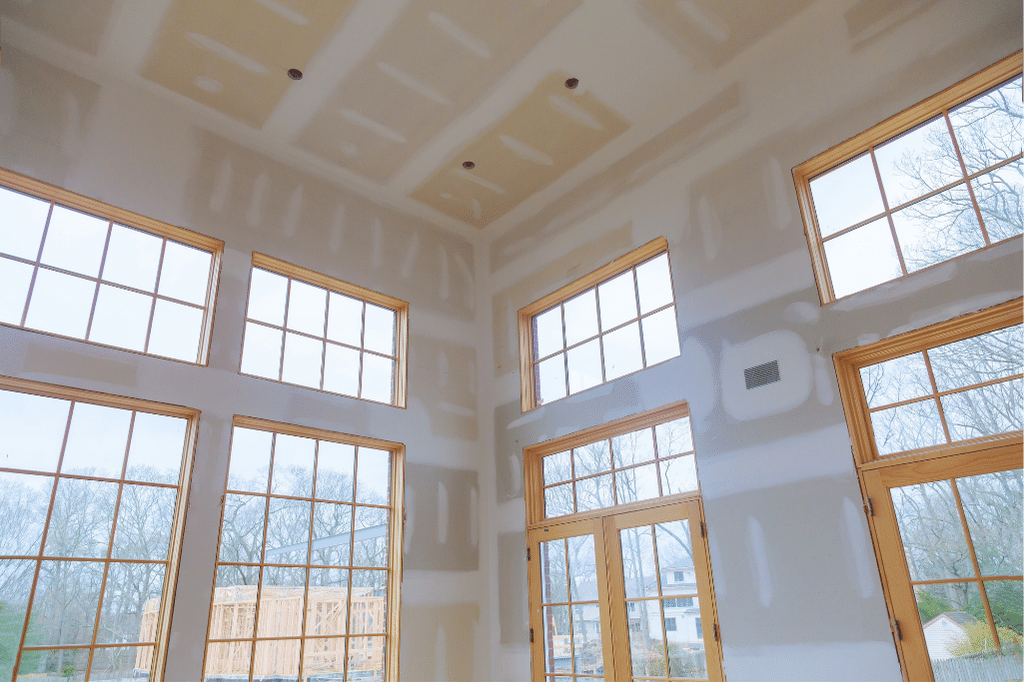Reputable Drywall Installation Solutions for each Area
Reputable Drywall Installation Solutions for each Area
Blog Article
Drywall Installation Facilitated: Tips for Perfect Outcomes
Drywall setup is frequently regarded as a difficult job, yet with the ideal approach and understanding, it can become a convenient endeavor. Understanding techniques for reducing, hanging, and ending up drywall can considerably influence the result.
Choosing the Right Products
Picking the suitable products for drywall installment is essential to attaining a long lasting and aesthetically pleasing surface. drywall installation. The key part, drywall sheets, usually can be found in different thicknesses, with 1/2-inch sheets being conventional for indoor wall surfaces. For areas needing extra dampness resistance, such as restrooms or kitchen areas, think about making use of green board or cement board, which are particularly made to endure humidity

In addition, picking the appropriate bolts-- either nails or screws-- is crucial for safeguarding the drywall to the framework. Drywall screws are usually preferred for their holding power and minimized threat of standing out. Finally, think about the finishing touches such as primer and paint, which not just boost the look but also shield the drywall from dampness and wear.
Preparing the Installment Location
Prior to beginning the drywall installment process, it is necessary to prepare the installment area thoroughly. A tidy workspace lessens the risk of damages to existing products and permits for efficient activity during setup.
Following, inspect the walls and ceiling for any type of blemishes, such as fractures, openings, or mold and mildew. Address these issues ahead of time; spot any kind of damages and permit sufficient time for repair work to completely dry. Additionally, guarantee that electric outlets, switches, and pipes are effectively positioned and represented, as this will certainly influence drywall positioning.
Consider the environmental conditions as well. A steady temperature level and moisture degree are crucial for optimum attachment and efficiency of the drywall products. If needed, utilize a dehumidifier or heating unit to develop appropriate problems.
Trimming and Hanging Drywall
The trick to reliable drywall installment depends on the exact cutting and hanging of the panels. Begin by measuring the space accurately, taking into consideration any kind of blockages such as electrical outlets or windows. Use a straight side and an energy blade to score the drywall along your measurements, after that break it along the scored line for a clean break. For more intricate cuts, such as around outlets, a drywall saw can be made use of for accuracy.

Always work from the top down and entrusted to right, guaranteeing that you keep a staggered pattern to enhance security. Properly hanging the drywall sets the structure for a smooth finish, ultimately resulting in premium results in your drywall job.
Taping and Mudding Strategies
While correct cutting and hanging of drywall sets the phase, the following vital action entails grasping taping and mudding strategies to ensure a seamless surface. Insulation is important for strengthening joints and protecting against cracks; it includes installing tape into the applied joint compound (mud) Begin with a top quality fiberglass or paper tape, using the tape over the joint and pushing it into the wet mud utilizing a taping blade, guaranteeing no air bubbles stay.
When the tape remains in area, use a slim layer of joint substance over the tape, feathering the sides to develop a smooth change to the drywall surface area. Permit this layer to completely dry completely before sanding it lightly to remove imperfections. Repeat this process, using added layers of mud as essential-- generally two to three coats-- while gradually expanding the application location with each layer to attain a smooth appearance.
After the last layer dries out, sand the surface with a fine-grit sandpaper up until smooth. sheetrock repair fort worth. Bear in mind to wear a mask throughout fining sand to stay clear of breathing in dust particles. Mastering these taping and mudding techniques is critical for accomplishing a professional-quality surface in your drywall setup
Finishing Touches for Perfection
Attaining a remarkable drywall setup surpasses taping and mudding; it culminates in the finishing touches that boost the total appearance. These final actions are critical drywall contractor in making sure a professional-grade surface that enhances the aesthetics of your space.
Begin by fining sand the dried out joint compound to develop a smooth surface. Use a fine-grit sandpaper and a fining sand block or post sander for optimal control. Pay certain interest to edges and edges, as these locations tend to call for more meticulous job. After sanding, clean down the walls with a wet fabric to remove any type of dust fragments, guaranteeing a tidy surface for paint.
Following, use a guide particularly made for drywall. This step is necessary, as it helps seal the joint substance and supplies an uniform base for the overcoat. Once the primer dries out, inspect for any type of view it now blemishes, and touch up as needed.
Final Thought
Finally, successful drywall setup depends upon the careful choice of products, thorough preparation of the setup location, and accurate implementation of reducing and hanging techniques. Mastery of taping and mudding processes is necessary for achieving a smooth finish. Furthermore, focus to finishing touches, including priming and touch-ups, guarantees a professional-grade outcome. By sticking to these standards, the top quality of workmanship can be considerably improved, adding to the overall aesthetic and functionality of the area.
Drywall setup is typically viewed as a difficult task, yet with the best method and understanding, it can come to be a convenient undertaking.Choosing the proper materials for drywall installation is essential to achieving a durable and cosmetically pleasing coating.Prior to beginning the drywall installation process, it is crucial to prepare the installment area thoroughly. Mastering these taping and mudding strategies is important for accomplishing a professional-quality surface in your drywall installation.
In verdict, successful drywall installment hinges on the careful option of materials, comprehensive preparation of the installation location, and accurate execution of reducing and published here hanging techniques.
Report this page